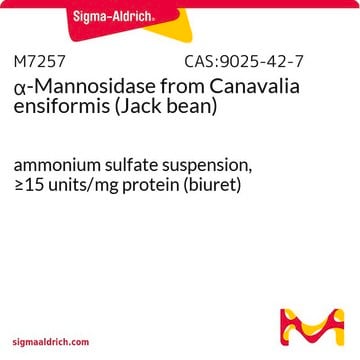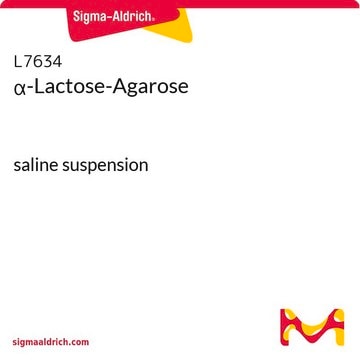M6400
D-Mannose Agarose
saline suspension
Synonym(s):
D-Mannose resin
About This Item
Recommended Products
biological source
birch/beech wood hydrolysate
Quality Level
form
saline suspension
technique(s)
affinity chromatography: suitable
matrix
cross-linked 4% beaded agarose
matrix activation
divinyl sulfone
matrix attachment
hydroxyl
matrix spacer
5 atoms
capacity
≥40 mg/mL binding capacity (concanavalin A)
suitability
suitable for chromatography
storage temp.
2-8°C
Looking for similar products? Visit Product Comparison Guide
Application
Physical form
Storage Class Code
10 - Combustible liquids
WGK
WGK 3
Flash Point(F)
Not applicable
Flash Point(C)
Not applicable
Certificates of Analysis (COA)
Search for Certificates of Analysis (COA) by entering the products Lot/Batch Number. Lot and Batch Numbers can be found on a product’s label following the words ‘Lot’ or ‘Batch’.
Already Own This Product?
Find documentation for the products that you have recently purchased in the Document Library.
Our team of scientists has experience in all areas of research including Life Science, Material Science, Chemical Synthesis, Chromatography, Analytical and many others.
Contact Technical Service








